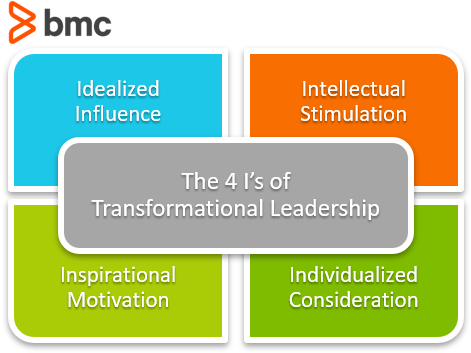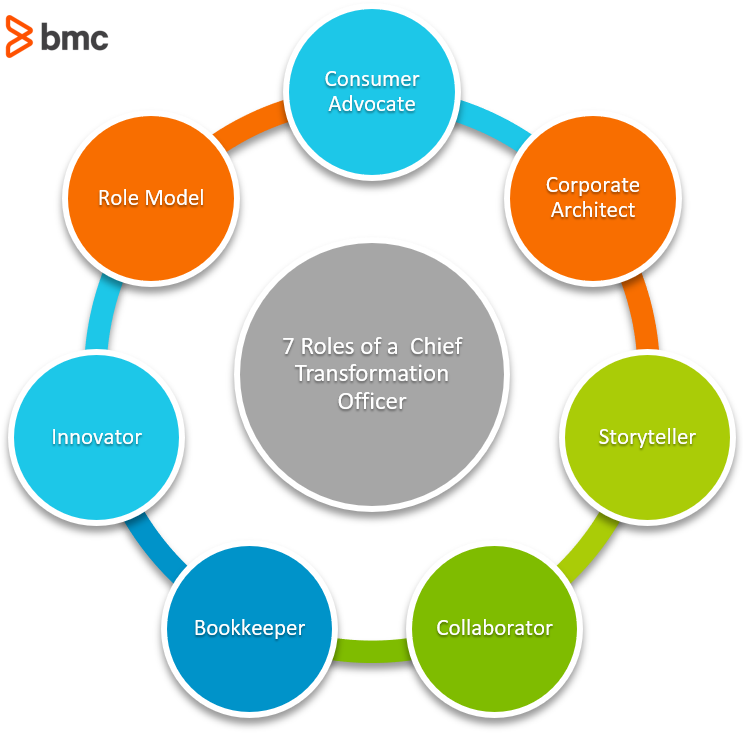In order to stay relevant, businesses need to be constantly evolving, the C-suite ever changing and expanding. No role embodies these outlooks better than the Chief Transformation Officer (CTO), a new C-suite role that is gaining popularity in organizations focused on digital transformation and the future.
So, let’s take a look at this role—and don’t confuse this CTO with the Chief Technology Officer.
What is a Chief Transformation Officer?
The role of the CTO is to drive growth and change within an organization. Transformational leadership positions are growing in popularity as a result of digital disruption across all industries.

Due to the complex structures and hierarchies of large organizations, the CTO is particularly valuable to the mature organization who might otherwise struggle with red tape when trying to make a change. Many of these organizations are set up for success in a previous era and it can take a lot of energy for a large ship to change course.
The CTO is meant to see the whole picture and consider people, data, and infrastructure in a cross-functional way, thus ensuring a seamless transformation across the organization. This executive oversees the transformation of every business process and anticipates changes and obstacles along the way.
With this position dedicated to transformation, the CTO can drive forward momentum and hold people accountable across the organization. Best of all? Because this role is designed specifically to support transformation, you are able to focus and prioritize without worrying about distractions and other responsibilities.
Skills of a Chief Transformation Officer
To become a CTO, your soft skills, industry knowledge, and overall experience are more important than a particular skillset.
You might benefit from being involved in change management and/or other significant transformations. You likely are also a well-rounded individual who can make sense of both the technical side of transformation and all the roles and departments that support it.
Lastly, communication is an absolutely vital component. As we’ll look at next, you’ll be communicating with every person and every level of your organization. Knowing how to talk to them, and adjusting for context, is key. (Being likable, with a bit of humor, will certainly help, too!)
What does a Chief Transformation Officer do?
Despite their streamlined position, focusing solely on transformation, the CTO must juggle numerous roles in order to ensure a seamless transition.
You could see these various roles as overlapping efforts, a balance of each. Or, you could view them as a progression, moving from one role into the next, all in the name of transforming the business, processes, and culture successfully.

1. Consumer Advocate
Any business or organization has a customer, client, end user, etc. Before embarking on any transformational change within the organization, it is important to consider how it will affect the consumer. The CTO can spearhead this effort.
Instead of merely considering the impact a transformation will have on a customer, a CTO would do well to consider the customer’s experience as the agent—the driver—for change:
- What do our customers need?
- How can we better serve these needs?
- How can we make the customer experience easier, more efficient, or truly outstanding?
The CTO can weave in relevant research and ask the right questions in order to anticipate your customers’ needs—before they are even aware of them. By connecting with consumers, the CTO can discover both:
- What your customers expect
- What your customers are willing to pay
2. Corporate Architect
Once the CTO understands the needs and desires of your consumers—and before any meaningful change can happen—you need to become an expert on the inner workings of your own organization.
- How are folks connected internally?
- What are the valuable networks set up externally?
- Are there any third-party vendors or providers who are integral to the business operations?
The CTO needs to know who the important players are, what they do, and how they interface with one another. To do this, you will map out the corporate hierarchy and the connections between departments. This activity illustrates all those connections, so you can better understand how a change in one department would affect another team and vice versa.
With this intimate understanding of how each team contributes to the whole, you will be able to visualize the optimal pathway to transformation.
3. Storyteller
Getting an entire organization on board with changes that may be a little uncomfortable at first is no small feat. It is important that the CTO is able to craft a compelling narrative as to why the organization needs to change. Your story should have a beginning, a middle, and an end—a story that inspires folks into action.
You’ll need to be able to clearly articulate the specific goals of the transformation project. It’s up to you, the CTO, to spell out how these changes will help the organization best the competition, or at least maintain your status as a competitive player in your market.
Once you know the ins and outs of your transformation story, you must:
- Share and disseminate the story
- Educate and communicate with folks at all levels of the organization
- Adjust the story so the message resonates with every player
Once you’ve dialed into the rationale for transformation, it should be easier for the CTO to keep everyone aligned on the purpose, targets, and approaches needed for a smooth transition.
A well-spun story will also help to build trust, making any necessary adjustments in the future easier to come by.
4. Collaborator
Once the CTO has their narrative laid out, it is time to get everyone on board. If the transition plan is going to work, it is essential that the CTO plays well with others.
First, you should connect with other C-suite members. These roles are integral to ensuring a smooth transition company-wide.
You’ll also need to understand the expectations of any internal stakeholders (the board, financial advisors, investors, etc.). It is up to the CTO to facilitate connections and build rapport with teammates across departments. These relationships will foster a smoother execution across each business unit.
By balancing the need for change and adaptation with respect for the employees’ need for consistency and stability, the CTO will be able to:
- Get everyone on the same page
- Maintain a consistent forward momentum throughout the process
5. Bookkeeper
Before setting any large-scale change under way, the CTO will need to assess the resources and capabilities of your organization. Knowing the strengths isn’t enough—you need to know how to wield them to better facilitate change.
You’ll also need to identify any gaps. Prioritize closing those gaps and streamlining operations. When encountering hurdles, the CTO must be persistent in solving them without letting hurdles derail the process. In the name of improving, an obstacle is merely a clue to what needs to be done.
Additionally, the CTO must identify any available funding. Work closely with the Chief Financial Officer (CFO) to ensure proper resources are available for the transformation and that budgets are adhered to. It would be wise to:
- Maintain a separate account
- Earmark funds for change
- Have a plan on how to replenish those funds
Keeping an up-to-date catalog of all resources will help to avoid any unpleasant surprises down the line.
6. Innovator
Things change so rapidly in business and tech these days. Any organization that anticipates change will be light years ahead of competitors who wait for change to come to them. This is where the CTO comes in.
As CTO, you must stay ahead of the curve; not only anticipating changes and innovations coming down the pike but also taking the lead and setting them in motion.
Many successful executives and business leaders end up in a place where they are hesitant to change due to the success they have experienced doing things the old way. By remaining agile and flexible, a CTO can help to facilitate and oversee the transformation process and prevent their organization from getting stuck in a familiar groove.
7. Role Model
Once the research has been done, resources accounted for, and the path set, the best way to motivate folks to do the work is to lead by example. The CTO is in a position to be both the motivation to change and the reward for doing so.
If the CTO is willing to dig in, do the work, and get their hands dirty, folks will feel more motivated to be an active part of the team. As CTO, you should model what you expect of your colleagues and employees:
- Maintain a positive attitude
- Remain resilient in the face of challenges
- Show grace, especially when accepting feedback
CTOs are in a unique position to take responsibility, practice self-care, and prioritize the wellbeing of their teammates.
Importantly, the CTO should not micromanage. If you trust your team—and show it—your team around you will rise to the occasion.
CTOs for successful digital transformation
Bringing a CTO on board is a great way for organizations to ensure that they are planning for the future and have an interest in not only staying relevant but maintaining a cutting-edge product. If the CTO adopts these 7 vital roles, they will pave the way for their success in being a leader of transformation and innovation.
Related reading
- BMC Business of IT Blog
- Organizational Change Management (OCM): A Template for Reorganizing IT Around Your Vision
- Business vs IT vs Digital Transformation: Strategy Across 3 Critical Domains
- Digital Transformation Trends in 2021
- Digital Transformation Metrics & KPIs for Measuring Success
- 4 Essential Leadership Qualities for C-Suite Leaders
These postings are my own and do not necessarily represent BMC's position, strategies, or opinion.
See an error or have a suggestion? Please let us know by emailing blogs@bmc.com.






